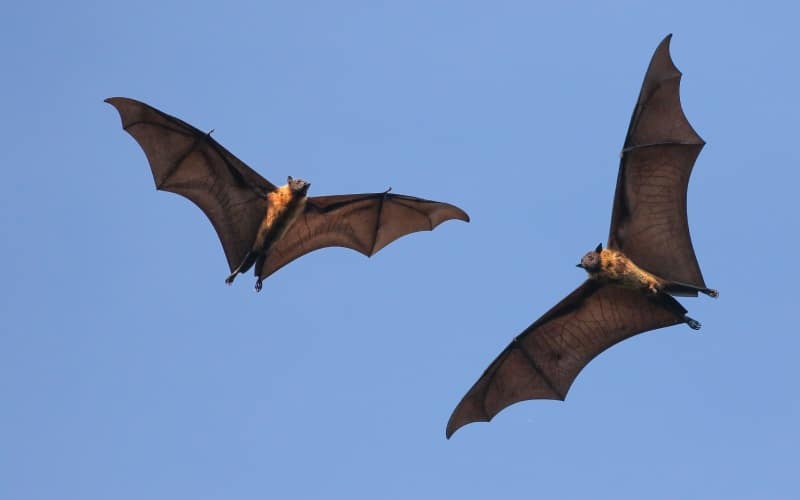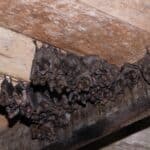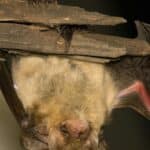When you think of rabies, bats might be the first animals that come to mind. While it’s true that bats can carry rabies without showing symptoms, the risk of transmission isn’t just through bites. Even a tiny scratch or contact with bat saliva on your mucous membranes could be enough to pass on the virus.
Understanding how rabies spreads is critical, especially since bats are the leading cause of rabies deaths in people in the United States. Small bat species, whose bites might go unnoticed, pose a significant public health risk. If you’ve had any contact with a bat, it’s essential to wash the area thoroughly and seek medical attention for a risk assessment.
Can Bats Spread Rabies Without Biting?
Rabies transmission from bats doesn’t always require a bite. In fact, scratches or contact with bat saliva through mucous membranes – such as your mouth, nose, or eyes – can also pass on the virus. There are instances where people have been exposed to rabies after handling bats or coming into contact with surfaces that a rabid bat has contaminated.
The post-exposure rabies vaccine is crucial. It consists of a series of four shots that dramatically increase your body’s defenses against the virus. The effectiveness of this vaccine series is high, working to prevent the onset of illness by strengthening your immune system.
You should be aware that rabies symptoms may not appear immediately. The virus can lurk in your body for months or even years, so it’s vital to consult a medical professional if you’ve had any encounter with bats, regardless of how insignificant it might seem.
Not all bats are infected with rabies. But, bats are the only known carriers which transmit the virus without symptoms. Bats play an essential role in the ecosystem but should never be underestimated as a public health risk.
Remember, if you find yourself or your pets in close quarters with bats, avoid interaction. And if contact is made, take immediate preventative action, including consulting with health professionals about the need for rabies post-exposure prophylaxis (PEP).
How Does Rabies Spread?
Through Direct Contact
It’s vital to understand that rabies virus transmission does not always require a bite. If an infected bat makes direct contact with your skin, particularly through a scratch or an open wound, the risk of transmission exists. Contact with infected tissues or fluids from bats can equally serve as a gateway for the virus to enter your system. Here’s what you need to know:
- Direct contact with a rabid bat’s saliva: If a bat’s saliva encounters any break in your skin or mucous membranes, the rabies virus can infiltrate your body.
- Handling bats: Without proper protective gloves, handling a bat—even without obvious injuries—presents a transmission risk.
- Bats in your living space: Any contact with a bat indoors should be taken seriously, as scratches or indirect exposure may occur without your immediate notice.

Through Saliva
Transmission via saliva from an infected bat is the most common route after bites. The rabies virus is present in high concentrations in the saliva of a rabid bat, and here’s how it can reach you:
- Contaminated scratches: A bat’s saliva on their claws can infect a scratch just as effectively as a bite.
- Exposure to mucous membranes: Eyes, nose, mouth—contact with bat saliva on any of these areas necessitates immediate medical attention.
- Ingestion: Rarely, if bat saliva comes into contact with food or surfaces and is later ingested, there’s a risk of rabies.
Remember, the virus is only infectious when it’s had the chance to enter your body either through an opening or direct contact with mucous membranes. Bats inadvertently becoming trapped in your household or residing in locations where human interaction occurs enhances the chances of such encounters. Regularly check attics, basements, and other potentially inviting areas for bats, and employ bat-proofing measures to mitigate these risks.
Bats and Rabies
The Link Between Bats and Rabies
In the contemplation of rabies vectors, bats hold a unique position. They are, alarmingly, the leading cause of rabies fatalities in humans. This startling fact does not stem from indiscriminate aggression but rather from a combination of bats’ biological characteristics and human behaviours. It’s essential to grasp that not all bats are carriers of rabies, with studies indicating only about 0.5% of wild populations harbour the virus. But, when considering the probability of rabies transmission to humans, recent cases predominantly trace back to these nocturnal mammals.
The sampling bias in testing may lead to misconceptions. Often, the tested bats either displayed signs of illness or came into direct contact with humans or animals, hence skewing public perception of the general risk. A clear understanding that bats are not asymptomatic carriers of rabies is critical; once Infected, a bat’s survival time is limited. Symptoms in bats may include lethargy, loss of appetite, and inability to fly, signs often culminating in the creature being grounded.
Precautions to Avoid Rabies from Bats
Rabies Pre-Exposure Prophylaxis (PreEP)
Before you consider entering environments where bat encounters are possible, PreEP is recommended, especially for those at greater risk, like cavers or wildlife professionals. This prophylactic measure involves getting vaccinated in advance, which can drastically reduce the risk of developing rabies after an encounter. Engaging in this preventative step is a key strategy in staying safe.
Handling and Contact
In scenarios where bats are present:
- Avoid any and all contact with bats whenever possible.
- Never attempt to keep bats as pets.
- For biologists or trained professionals who handle bats, ensuring up-to-date immunizations and having their protective antibody titre measured regularly is non-negotiable.
- Booster doses of vaccine should be taken as recommended, typically every 6 to 24 months, depending on exposure levels.
Immediate Response to Bites or Scratches
If you do end up with a bat bite or scratch:
- Promptly wash and flush the wound thoroughly with soap and water.
- Seek medical attention immediately and report the incident to your local medical office.
- Postexposure prophylaxis (PEP) is imperative and generally involves a course of rabies vaccinations to prevent the virus from taking hold.

Stay Safe
Understanding the risks and taking the right precautions can greatly reduce your chances of contracting rabies from bats. Remember, it’s not just bites that pose a threat; scratches and indirect contact with bat saliva also warrant caution. If you have a bat infestation on your property do not try to deal with it yourself, instead call the professionals at Wildside Wildlife Removal to humanely and effectively rid you of your unwelcome visitors.
Robert Liam Donnell, owner of Wildside Wildlife Removal and Prevention LTD, is a renowned figure in the wildlife removal industry with over eight years of experience. His company, celebrated for its ethical approach, is highly rated on platforms like threebestrated.com. Starting his career at 22, Robert has grown his business into a trusted brand, known for honest and effective wildlife solutions. He has also contributed to public awareness through a radio interview on AM900, discussing wildlife management nuances. An avid skier, golfer, and nature enthusiast, Robert’s personal interests complement his professional dedication. His achievements include high Google ratings for his new business, reflecting his commitment to customer satisfaction and ethical practices. Robert’s advice for success in this field includes persistence, honesty, and prioritizing customer needs. Discover more about his work at Wildside Wildlife Removal, where his passion for wildlife and customer care is evident in every service.









